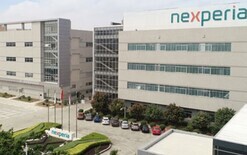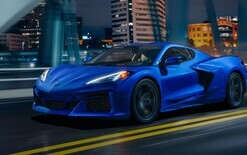Dual cab secures five stars

The new Mitsubishi Triton has been awarded five ANCAP stars after being the first dual-cab ute to be tested and assessed against 2023-25 rating criteria.
It demonstrated high levels of protection for the driver, front-seat adult passenger and child occupants in the majority of physical crash tests.
Maximum scores were achieved by the passenger for frontal offset, the driver in the full-width frontal and oblique side-pole tests, and both child dummies in frontal and side-impact tests.
Opportunities for improvement were noted for the chest and upper legs of the smaller rear passenger in the full-width frontal test where a weak chest score was recorded and a penalty applied for increased risk of abdominal injury in this crash scenario.
As part of the suite of destructive tests, ANCAP assesses the potential risk of injury to occupants of another vehicle if struck by the one being tested.
The Triton was shown to pose a relatively moderate risk compared with other models of its type. This indicates a considered design by Mitsubishi, which minimises the risk this ute poses to other road users.
Such an approach to design was also evident in the pedestrian-impact tests in which the grill and bumper scored well in assessment of risk to the leg or pelvis.
“This rating demonstrates Mitsubishi’s determination and ability to design, build and deliver a five-star product,” said Carla Hoorweg, ANCAP’s chief executive officer.
“Dual-cab utes are some of the highest-selling models in Australia and New Zealand – purchased in volume by general consumers and fleet buyers alike.
“In many cases, they’re tool-of-trade vehicles yet also family staples, so it’s pleasing to see Mitsubishi strive for and achieve this five-star result.
“There’s an established and well-recognised market expectation for five-star vehicles among the ute segment. The aspiration of manufacturers to achieve five stars should extend across all market segments, not just those targeted by fleet buyers.”
In collision-avoidance testing, the Triton’s performance was sound with all aspects of the safety-assist assessment combining to a score of 70 per cent – the score threshold for a five-star rating.
The Triton is fitted with an autonomous emergency braking (AEB) system capable of detecting and responding to other vehicles, pedestrians, cyclists and motorcyclists in a mix of scenarios.
However, its functionality does not extend to the more sophisticated AEB scenarios, such as avoidance in t-bone intersection crashes and head-ons. This limited its overall safety-assist score.
Driver monitoring systems (DMS) are also encouraged in the safety-assist area of assessment. The Triton offers a direct DMS as standard.
Hoorweg says: “Direct driver monitoring systems are relatively new across the market with the Triton being one of the first direct DMS systems we’ve assessed locally.
“The Triton met ANCAP protocol requirements in alerting for fatigue and distraction. However, Mitsubishi’s implementation of this system could be improved by reducing unnecessary warnings to the driver.”
In addition to visual warnings, the manufacturer can choose between haptic or audible DMS warnings to score points under ANCAP protocols. Distraction warnings when reversing, parking or during slow-speed manoeuvres below 10kph are not required or rewarded by ANCAP.
“Utes in our market generally have longer model lifecycles than passenger cars,” adds Hoorweg. “This presents a clear opportunity for Mitsubishi to introduce additional functionality and improved performance of on-board systems with future product revisions.”
This five-star ANCAP rating applies to all two and double-cab variants of the Triton on sale in New Zealand and Australia.





